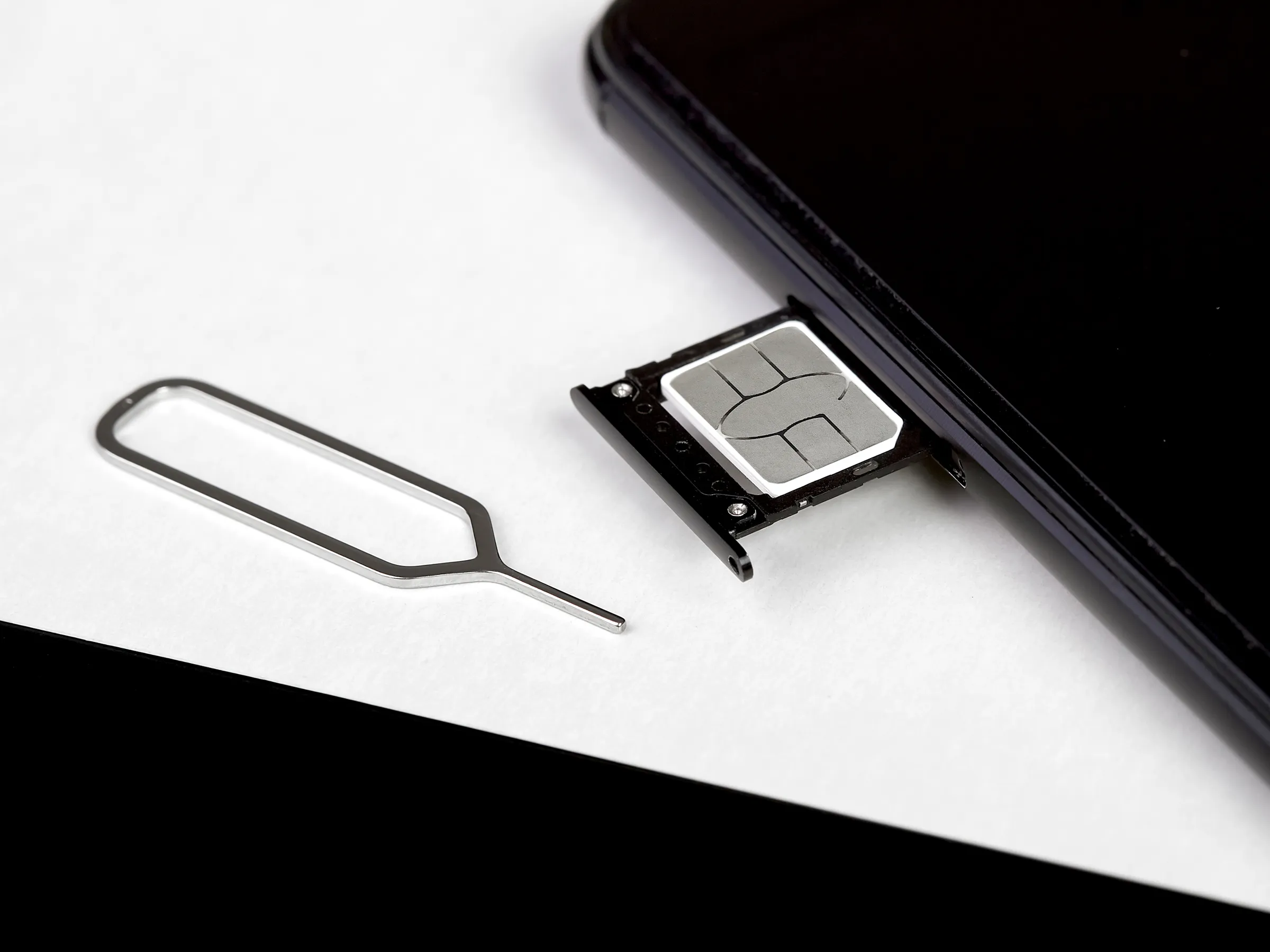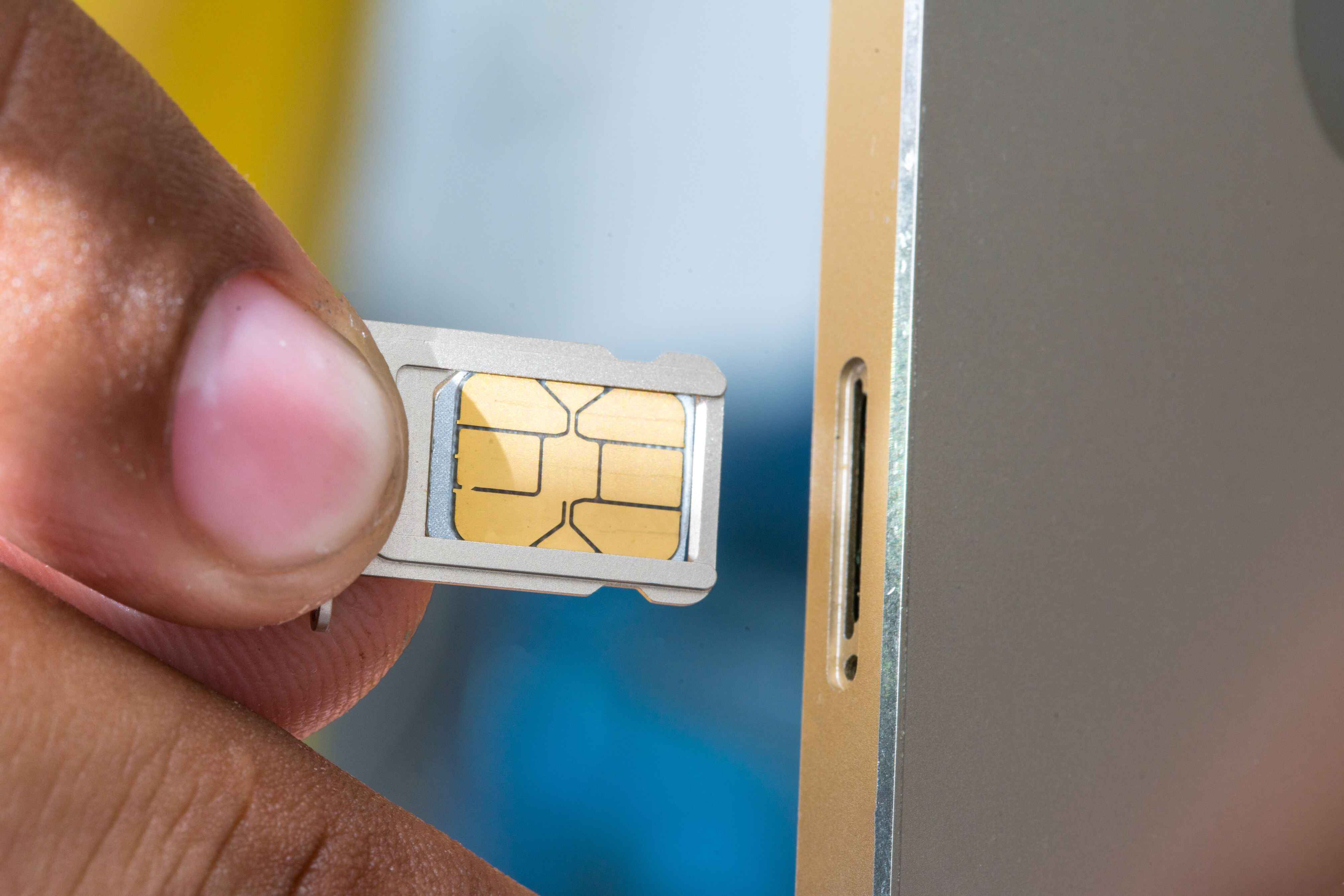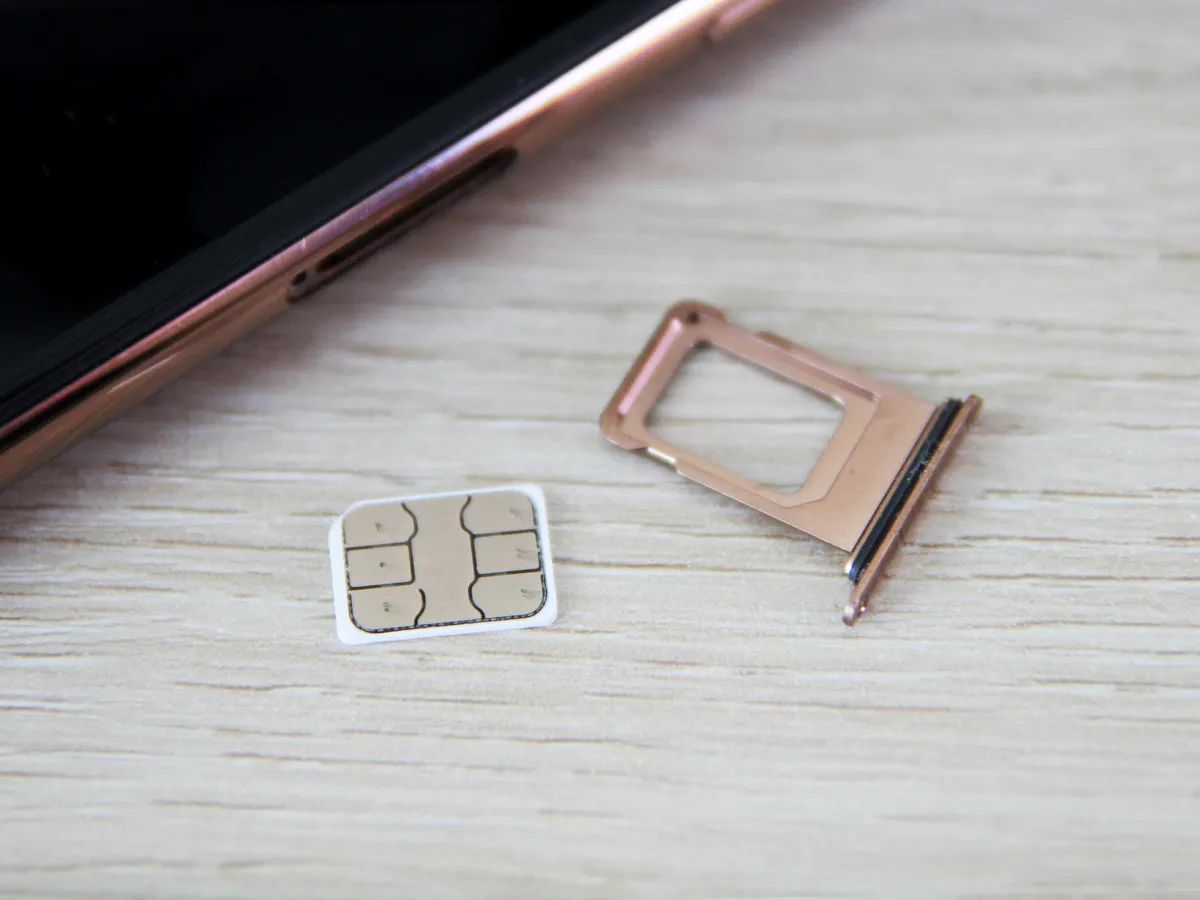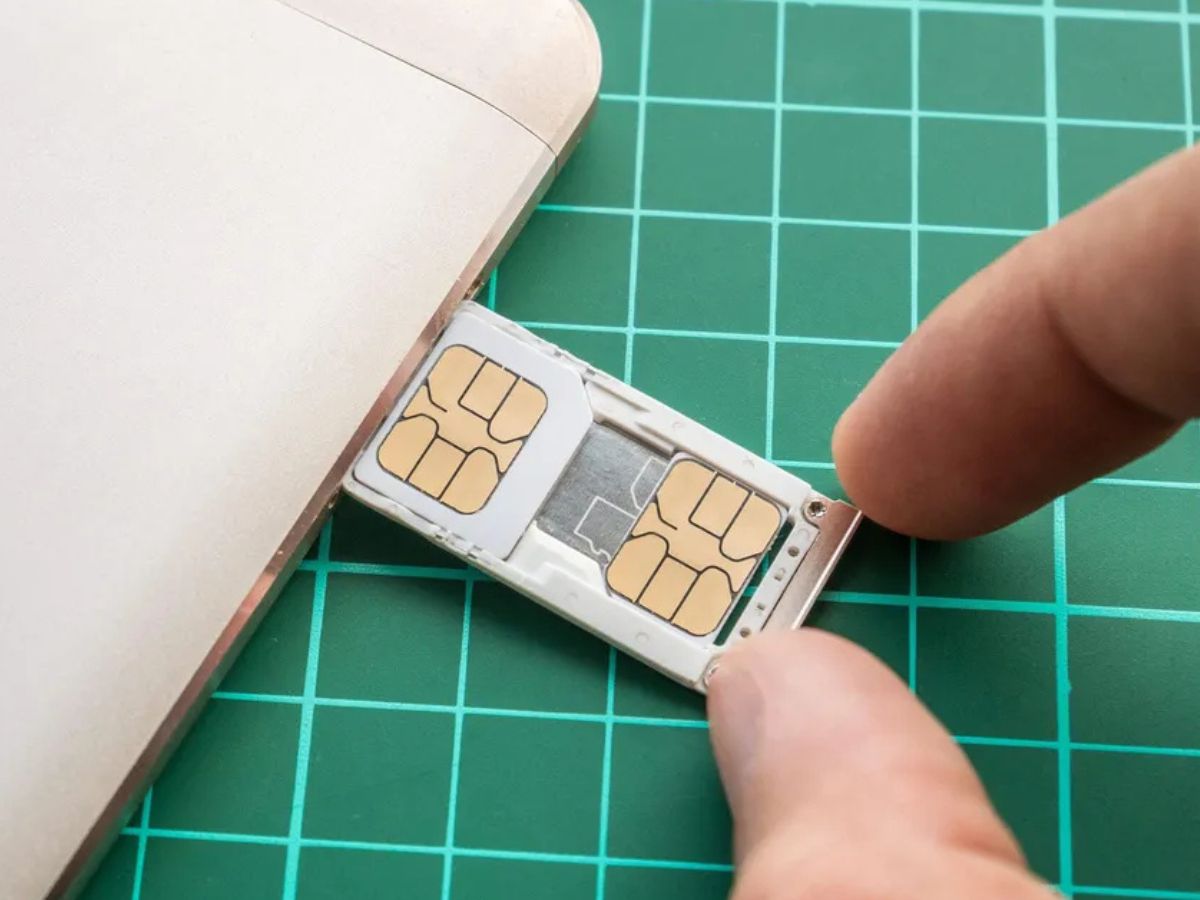Introduction
Switching SIM cards in a mobile device is a straightforward process that allows users to seamlessly transition between different networks or upgrade to a new device. Whether you are switching to a new phone, changing carriers, or replacing a damaged SIM card, this step-by-step guide will walk you through the process with ease. By following these simple instructions, you can ensure a smooth transition without any hassle.
The SIM card, or Subscriber Identity Module, is a small, removable card that stores essential information such as your phone number, contacts, and text messages. It also authenticates your identity to the mobile network, allowing you to make calls, send texts, and access mobile data. When switching SIM cards, it's important to handle the delicate card with care to avoid damaging it or the device.
In this guide, we will cover the essential steps for switching SIM cards, including gathering necessary information, powering off your device, locating the SIM card slot, removing the old SIM card, inserting the new SIM card, powering on your device, and activating the new SIM card. Each step is crucial to ensuring a successful SIM card switch, and we will provide detailed instructions to help you navigate the process smoothly.
Whether you're a seasoned mobile device user or a newcomer to the world of SIM cards, this guide is designed to be user-friendly and accessible to all. By the end of this comprehensive walkthrough, you'll have the knowledge and confidence to switch SIM cards like a pro, empowering you to stay connected on your terms. Let's dive into the step-by-step process and make the SIM card switch a breeze.
Step 1: Gather Necessary Information
Before embarking on the process of switching SIM cards, it's essential to gather the necessary information to ensure a smooth transition. This preliminary step involves obtaining crucial details about your current SIM card and the new SIM card you intend to use. Here's a detailed breakdown of the information you need to gather:
-
Current SIM Card Information:
- Phone Number: Take note of your current phone number associated with the existing SIM card. This is crucial for ensuring that your new SIM card is activated with the correct number.
- SIM Card Size: Determine the size of your current SIM card. SIM cards come in various sizes, including standard, micro, and nano. Knowing the size of your current SIM card will help you ensure compatibility with the new device or SIM card slot.
-
New SIM Card Details:
- Carrier Information: If you are switching carriers, gather information about the new carrier, including their name, network coverage, and any specific activation requirements.
- SIM Card Size: If the new device requires a different SIM card size than your current one, make sure to obtain the correct size to avoid any compatibility issues.
-
Device Compatibility:
- Device Model: If you are switching to a new phone, ensure that the new device is compatible with the SIM card size and network frequency bands supported by your chosen carrier.
- Unlocking Status: If your current device is locked to a specific carrier, you may need to unlock it before using a SIM card from a different carrier. Check the unlocking status of your device to avoid any complications during the switch.
By gathering this essential information, you will be well-prepared to proceed with the SIM card switch confidently. This proactive approach minimizes the likelihood of encountering compatibility issues or activation delays, allowing for a seamless transition to your new SIM card and mobile network. With the necessary information at hand, you are ready to move on to the next step and power off your device in preparation for the SIM card switch.
Step 2: Power Off Your Device
Before proceeding with the SIM card switch, it is crucial to power off your mobile device to ensure a safe and smooth transition. Powering off the device minimizes the risk of damaging the SIM card or the device's SIM card slot during the removal and insertion process. Here's a detailed overview of the steps to power off your device:
-
Save and Close Applications: Begin by saving any unsaved data and closing all running applications on your device. This ensures that you won't lose any important information when the device powers off.
-
Press and Hold the Power Button: Locate the power button on your device, typically located on the side or top edge. Press and hold the power button until the power-off menu or prompt appears on the screen.
-
Select "Power Off": Once the power-off menu is displayed, select the "Power Off" option to initiate the shutdown process. Depending on your device model and software interface, you may need to confirm the action by tapping "OK" or a similar prompt.
-
Wait for the Device to Power Off: Allow the device to complete the shutdown process. You may see a shutting down animation or a blank screen indicating that the device is powering off.
-
Verify the Device is Off: Ensure that the device is fully powered off before proceeding to the next step. You can do this by pressing the power button briefly or observing any indicator lights to confirm that the device is no longer active.
By following these steps to power off your device, you are taking a proactive measure to safeguard the integrity of the SIM card and the device itself. This simple yet essential step sets the stage for a successful SIM card switch, allowing you to proceed with confidence to the next phase of the process. With your device safely powered off, you are now ready to locate the SIM card slot and prepare for the removal of the old SIM card.
Step 3: Locate the SIM Card Slot
Locating the SIM card slot is a crucial step in the process of switching SIM cards. The SIM card slot is where the SIM card is inserted into the mobile device, allowing it to connect to the mobile network and access essential services such as calling, texting, and mobile data. The location of the SIM card slot may vary depending on the make and model of your device. Here's a detailed guide to help you locate the SIM card slot on your mobile device:
-
Consult the Device Manual: If you are unsure about the location of the SIM card slot on your device, refer to the device manual or user guide provided by the manufacturer. The manual typically contains detailed illustrations and instructions on the physical layout of the device, including the location of the SIM card slot.
-
Inspect the Device Edges: In most cases, the SIM card slot is located along the edges of the device. Common placements include the sides or the top of the device, although some models may have the SIM card slot located on the back or underneath the battery cover.
-
Look for a SIM Tray or Slot: The SIM card slot may be covered by a small tray that can be ejected using a SIM ejector tool or a paperclip. Alternatively, some devices feature a slot with a hinged cover that can be opened to access the SIM card slot.
-
Identify the SIM Card Icon: Many devices have a small icon next to the SIM card slot, depicting a SIM card or a set of horizontal lines. This visual indicator can help you pinpoint the location of the SIM card slot with ease.
-
Check for Labeling or Engravings: Some devices have the SIM card slot labeled or engraved with the words "SIM" or "SD/SIM." These markings provide a clear indication of the slot's location and purpose.
By following these steps and visual cues, you can successfully locate the SIM card slot on your mobile device. Once you have identified the SIM card slot, you are ready to proceed to the next step and prepare for the removal of the old SIM card.
Step 4: Remove the Old SIM Card
Removing the old SIM card from your mobile device is a delicate yet straightforward process that requires careful handling to avoid damage to the SIM card or the device itself. By following these detailed steps, you can safely extract the old SIM card and prepare the SIM card slot for the insertion of a new SIM card.
-
Eject the SIM Tray: If your device features a SIM tray that houses the SIM card, use a SIM ejector tool or a small paperclip to gently press into the pinhole located near the SIM tray. Apply light pressure to release the tray from the device. Alternatively, some devices may have a hinged cover over the SIM card slot, which can be opened to access the SIM card.
-
Remove the SIM Card: Once the SIM tray is ejected or the SIM card slot cover is open, carefully remove the old SIM card from its slot. Handle the SIM card with care, holding it by the edges to avoid touching the metal contacts or the exposed circuitry. Ensure that the SIM card is removed smoothly without applying excessive force.
-
Inspect the SIM Card: Take a moment to inspect the old SIM card for any signs of damage, such as scratches, bends, or corrosion. If the SIM card appears to be in good condition, set it aside in a safe place, as it may contain important data such as contacts and messages that can be transferred to the new SIM card.
-
Clean the SIM Card Slot: With the old SIM card removed, take a brief moment to inspect the SIM card slot in the device. Use a gentle burst of compressed air or a soft brush to remove any dust, debris, or lint that may have accumulated in the slot. This ensures a clean and unobstructed space for the new SIM card.
By carefully following these steps to remove the old SIM card, you can ensure a smooth transition to the next phase of the process: inserting the new SIM card. Handling the old SIM card and the device with care during this step is essential to prevent any potential damage and prepare for the seamless installation of the new SIM card.
Step 5: Insert the New SIM Card
With the old SIM card safely removed and the SIM card slot prepared, it's time to proceed with the insertion of the new SIM card. This step marks a pivotal moment in the SIM card switching process, as it enables your mobile device to connect to the new network and access essential services. Follow these detailed instructions to seamlessly insert the new SIM card into your device:
-
Identify the Correct Orientation: Before inserting the new SIM card, take a moment to identify the correct orientation for placement. Most SIM cards are designed with a notched corner or a subtle cutout that aligns with a corresponding guide in the SIM card slot. Ensure that the SIM card is positioned correctly to prevent any potential insertion issues.
-
Align and Insert the SIM Card: Holding the new SIM card with the metal contacts facing down and the notched corner positioned as indicated by the slot guide, gently slide the SIM card into the designated slot. Apply minimal pressure to ensure a smooth and secure insertion. If your device features a SIM tray, carefully place the SIM card on the tray, then reinsert the tray into the device.
-
Secure the SIM Card: Once the SIM card is inserted, ensure that it is securely positioned within the slot or tray. The SIM card should sit flush with the slot's surface, without protruding or feeling loose. A secure fit is essential for maintaining proper contact and connectivity with the device's SIM card reader.
-
Replace the SIM Tray or Cover: If your device utilizes a SIM tray, gently push the tray back into its slot until it clicks into place. For devices with a hinged cover, carefully close the cover to secure the SIM card in its designated slot. Ensure that the tray or cover is fully closed and flush with the device's exterior.
-
Power On Your Device: With the new SIM card successfully inserted, power on your device to initiate the activation process. Depending on your device and carrier, you may see on-screen prompts or notifications indicating the activation status of the new SIM card. Allow the device to complete the activation process before proceeding to the next step.
By following these detailed instructions, you can confidently insert the new SIM card into your device, setting the stage for a seamless transition to the new network or device. The successful insertion of the new SIM card paves the way for the final step: activating the new SIM card to ensure full connectivity and functionality on your mobile device.
Step 6: Power On Your Device
After successfully inserting the new SIM card, the next crucial step in the SIM card switching process is to power on your device. This step initiates the activation process for the new SIM card, allowing your mobile device to establish connectivity with the chosen network and enabling essential calling, texting, and data services. Powering on your device sets the stage for the seamless integration of the new SIM card, ensuring that you can stay connected without interruption.
To power on your device, follow these straightforward steps:
-
Press and Hold the Power Button: Locate the power button on your device, typically situated on the side, top, or back panel. Press and hold the power button for a few seconds to initiate the device's startup sequence.
-
Observe the Startup Process: As the device powers on, you may see the manufacturer's logo or an animated startup screen. This indicates that the device is booting up and initializing its components, including the newly inserted SIM card.
-
Wait for the Device to Start Up: Allow the device to complete the startup process. Depending on the device model and software, this may take a few moments. Be patient as the device prepares to recognize and activate the new SIM card.
-
Check for Network Connectivity: Once the device has powered on, check for network connectivity indicators such as signal bars or network icons on the screen. If the new SIM card has been successfully activated, you should see indications of network reception, affirming that the device is now connected to the chosen mobile network.
-
Test Essential Functions: To confirm that the new SIM card is fully operational, test essential functions such as making a test call, sending a text message, and accessing mobile data. These tests verify that the device is seamlessly connected to the network and that the new SIM card is functioning as intended.
By following these steps to power on your device, you complete the final stage of the SIM card switching process, ensuring that the new SIM card is successfully activated and integrated into your mobile device. With the device powered on and the new SIM card fully operational, you can enjoy uninterrupted connectivity and access to essential mobile services, allowing you to stay connected on your terms.
This completes the step-by-step guide on switching SIM cards, empowering you to navigate the process with confidence and ease. Whether you're upgrading to a new device, changing carriers, or replacing a damaged SIM card, these detailed instructions have equipped you with the knowledge and skills to seamlessly switch SIM cards and stay connected in today's mobile world.
Step 7: Activate the New SIM Card
Activating the new SIM card is the final crucial step in the process of switching SIM cards. This step ensures that the new SIM card is fully recognized and authenticated by the mobile network, allowing you to access essential services and enjoy seamless connectivity on your device. To activate the new SIM card, follow these detailed guidelines to complete the activation process:
-
Initiate the Activation Process: Once the new SIM card is inserted and the device is powered on, the activation process may begin automatically. In some cases, you may need to follow on-screen prompts or dial a specific activation number provided by your carrier to kickstart the activation process.
-
Confirm Activation Status: After initiating the activation process, monitor your device for any on-screen notifications or indicators related to the activation status. These notifications may include messages confirming the successful activation of the new SIM card or prompts to restart the device for the activation to take effect.
-
Restart Your Device (If Required): If prompted, restart your device to complete the activation process. A device restart allows the system to apply the necessary configurations and settings associated with the new SIM card, ensuring that it is fully integrated and operational.
-
Check for Network Connectivity: Once the activation process is complete, verify that your device is connected to the mobile network. Look for network reception indicators such as signal bars or network icons on the screen, confirming that the new SIM card is successfully activated and ready for use.
-
Test Essential Functions: To ensure that the new SIM card is fully functional, perform tests on essential functions such as making calls, sending and receiving text messages, and accessing mobile data. These tests validate that the new SIM card is seamlessly integrated with the network and that all essential services are operational.
By following these detailed steps to activate the new SIM card, you can ensure a smooth and successful transition to the new mobile network or device. Activating the new SIM card is the final piece of the puzzle, allowing you to enjoy uninterrupted connectivity and access to essential mobile services. With the new SIM card fully activated, you are now ready to stay connected and make the most of your mobile experience.
Conclusion
Congratulations! You've successfully navigated the step-by-step process of switching SIM cards in your mobile device. By following the detailed instructions provided in this guide, you've empowered yourself to seamlessly transition between different networks, upgrade to a new device, or replace a damaged SIM card. The completion of each step, from gathering necessary information to activating the new SIM card, has equipped you with the knowledge and confidence to handle the process with ease.
Switching SIM cards is a fundamental aspect of managing your mobile connectivity, and with the increasing prevalence of advanced mobile devices, it's essential to understand the intricacies of this process. Whether you're a seasoned mobile device user or a newcomer to the world of SIM cards, the comprehensive guidance provided in this guide has demystified the SIM card switching process, making it accessible and user-friendly for all.
By gathering essential information about your current and new SIM cards, powering off your device, locating the SIM card slot, removing the old SIM card, inserting the new SIM card, powering on your device, and activating the new SIM card, you've gained a holistic understanding of the entire process. This knowledge empowers you to make informed decisions, troubleshoot potential issues, and enjoy uninterrupted connectivity on your terms.
As you embark on your mobile device journey, remember that the ability to switch SIM cards gives you the flexibility to adapt to changing needs, explore new mobile networks, and take full advantage of the latest devices. Whether you're traveling internationally, seeking more competitive mobile plans, or embracing the latest smartphone innovations, the knowledge and skills you've acquired in this guide will serve you well.
In today's fast-paced and interconnected world, staying connected is more than a convenience – it's a necessity. The ability to confidently switch SIM cards empowers you to maintain seamless communication, access essential services, and make the most of your mobile experience. With this newfound expertise, you are well-equipped to navigate the dynamic landscape of mobile connectivity and embrace the possibilities that come with it.
Thank you for embarking on this journey to master the art of switching SIM cards. Your dedication to understanding and mastering this essential process reflects your commitment to staying connected and making the most of your mobile device. As you continue to explore the ever-evolving world of mobile technology, may your newfound knowledge serve as a valuable asset, enabling you to navigate with confidence and ease. Here's to seamless connectivity, limitless possibilities, and a future filled with mobile empowerment.

























